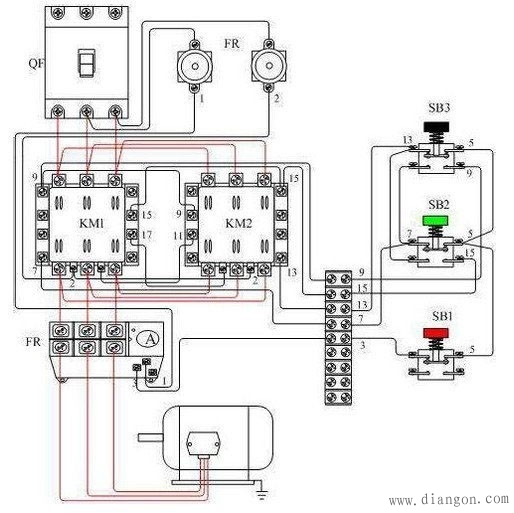Intermediate relays are a type of electrical relay that function similarly to AC contactors. They consist of a fixed iron core, a movable iron core, a spring, moving and static contacts, a coil, terminal blocks, and an outer casing. When the coil is energized, electromagnetic force causes the movable iron core to move, which in turn actuates the moving contact. This results in the normally closed contact opening and the normally open contact closing. When the coil is de-energized, the spring returns the movable core to its original position, resetting the contacts. 1. Replacing Small Contactors: Intermediate relays can be used as an alternative to small contactors when the load capacity is low. For instance, they are often used in electric shutters or small appliances. This not only serves the control purpose but also saves space and allows for a more compact and refined control system. 2. Increasing Contact Count: One of the most common applications of intermediate relays is to increase the number of available contacts. In complex control systems, a single contactor may need to control multiple devices. By adding an intermediate relay, the circuit can handle more components efficiently without overloading the main contactor. 3. Boosting Contact Capacity: Although the load capacity of intermediate relays isn't extremely high, they still offer sufficient power to manage moderate loads. Additionally, they require very little current to operate, making them ideal for expanding the control capacity of circuits. For example, it's often impractical to directly control large loads using outputs from inductive switches or transistors, so an intermediate relay is used to switch the load instead. 4. Changing Contact Type: In industrial control systems, there are times when the control requires the use of a normally closed contact, but all such contacts on the main contactor have already been used. In this case, an intermediate relay can be connected in parallel with the contactor coil, allowing its normally closed contact to take over the control task, effectively changing the contact type to meet the requirement. 5. Acting as a Switch: In certain control circuits, intermediate relays are used to switch electrical components. Their contacts are controlled by the circuit, enabling functions like automatic degaussing in color TVs or monitors. Here, a transistor controls the relay’s operation, which in turn manages the degaussing coil’s on/off state. 6. Voltage Conversion: Some intermediate relays can also be used to convert voltage levels within a circuit, allowing different parts of the system to operate at different voltages while maintaining safe and effective control. 7. Reducing Circuit Interference: In sensitive electronic systems, intermediate relays can help isolate different parts of the circuit, reducing noise and interference that could otherwise affect performance or cause malfunctions. Indoor Fiber Optic Cable,Indoor Armored Fiber Optic Cable,Indoor Optical Fiber Cable,Indoor Outdoor Fiber Cable Guangzhou Jiqian Fiber Optic Cable Co.,ltd , https://www.jqopticcable.com